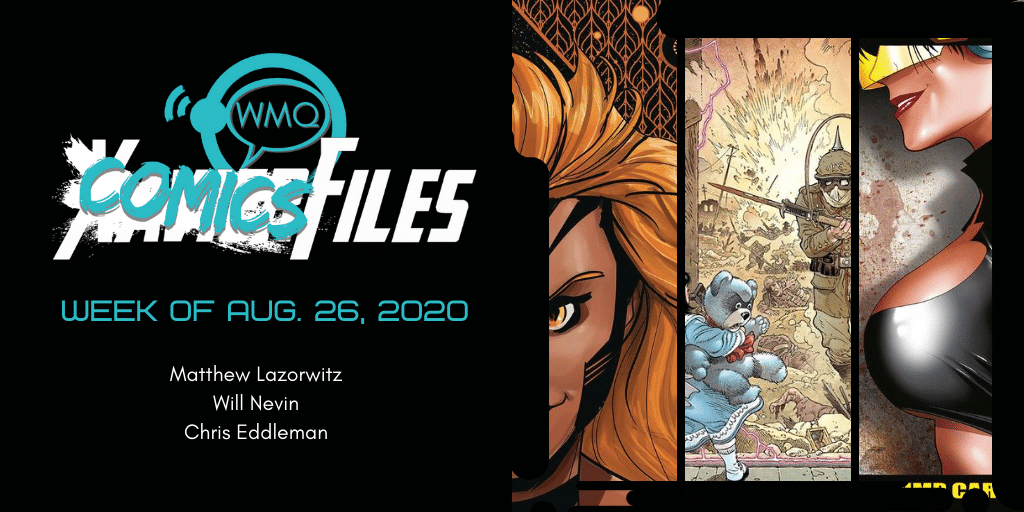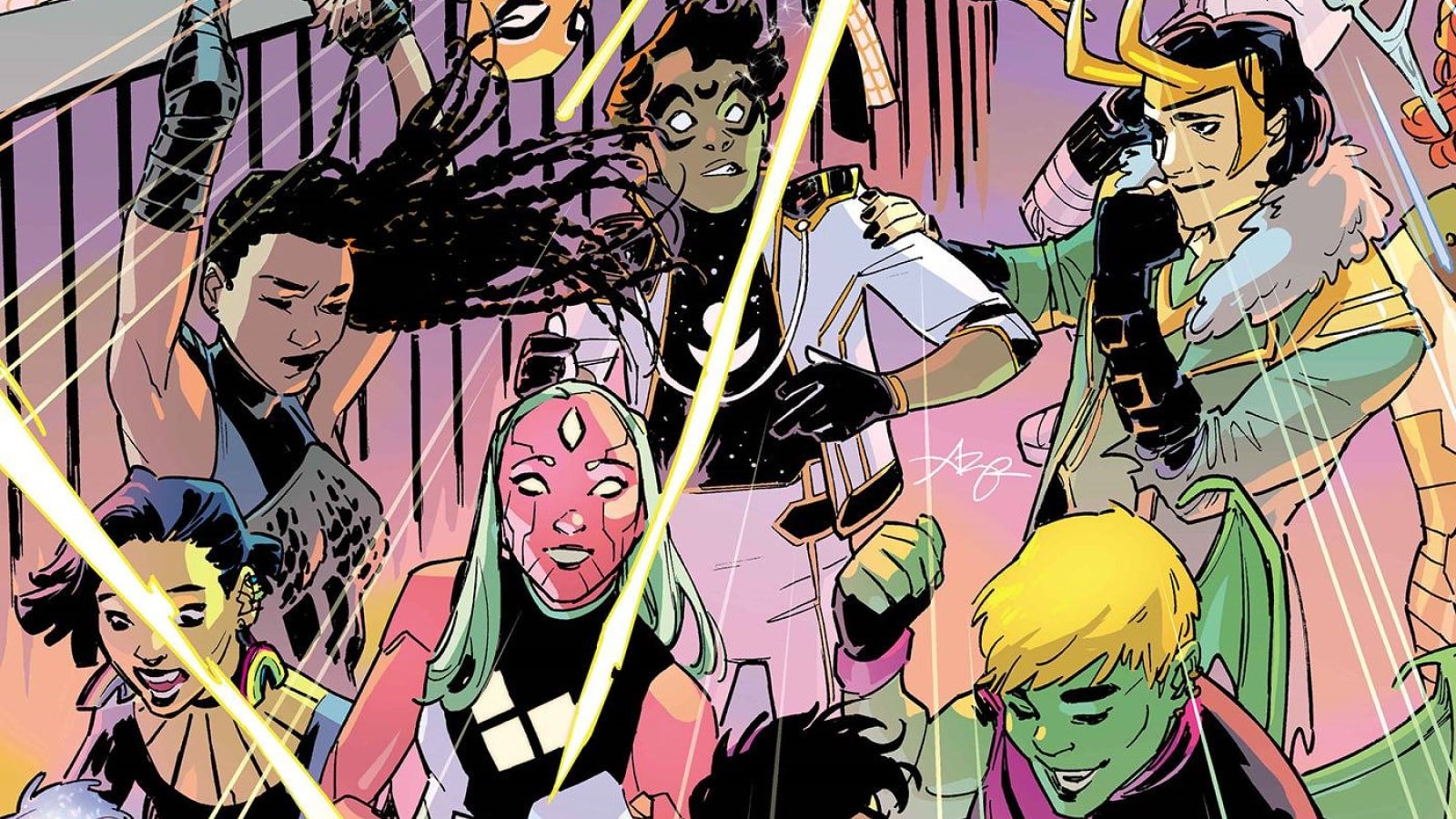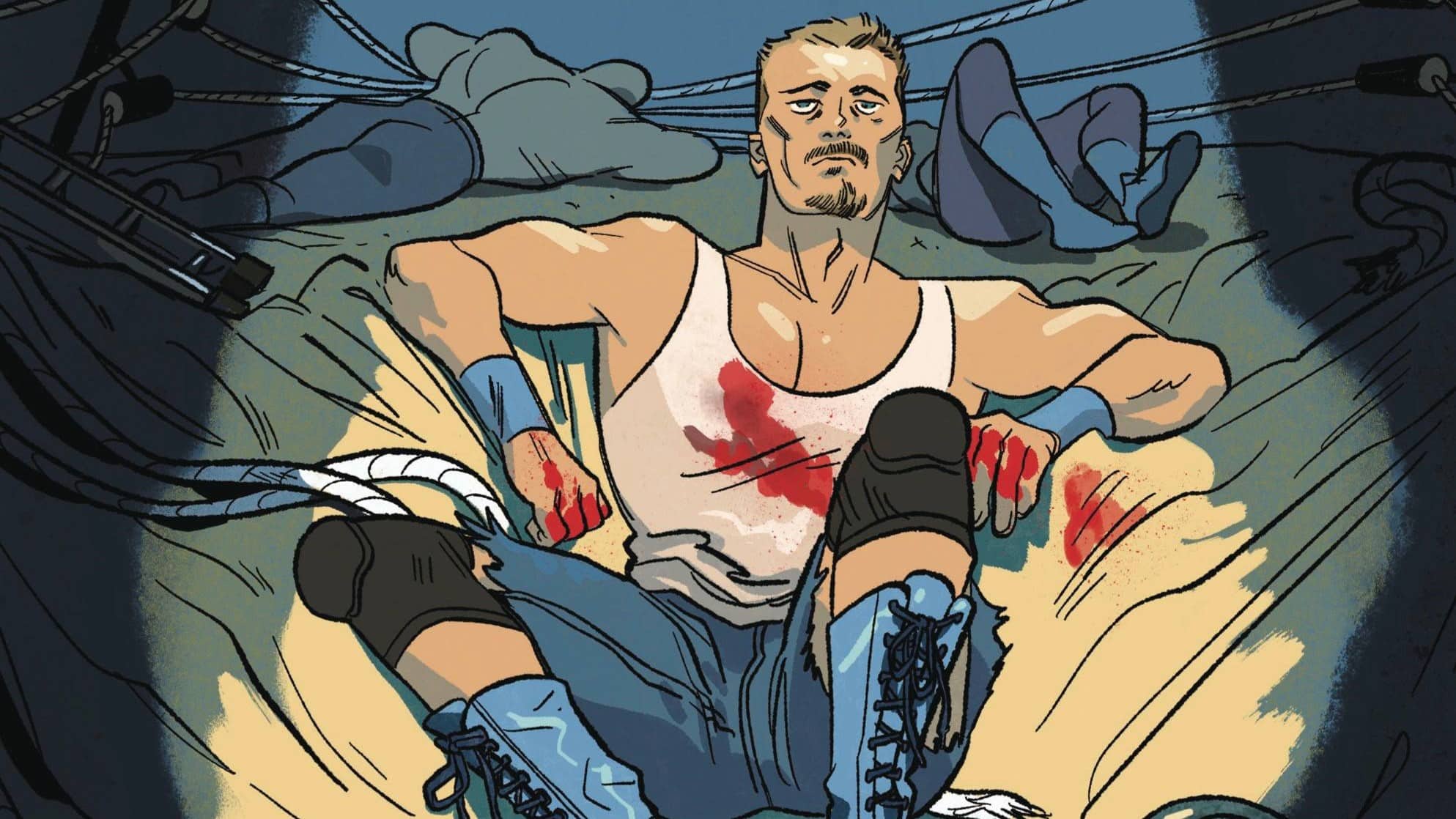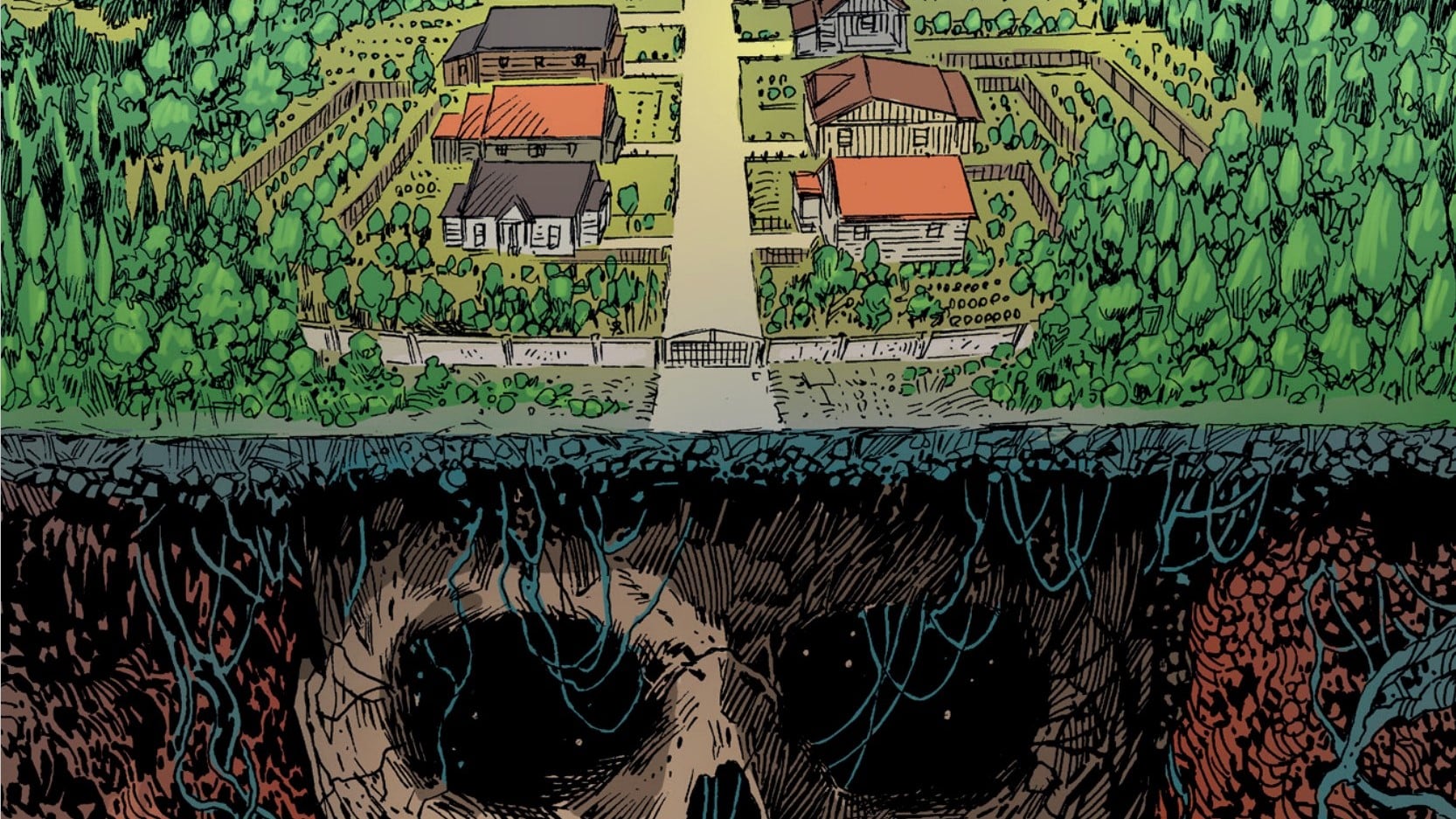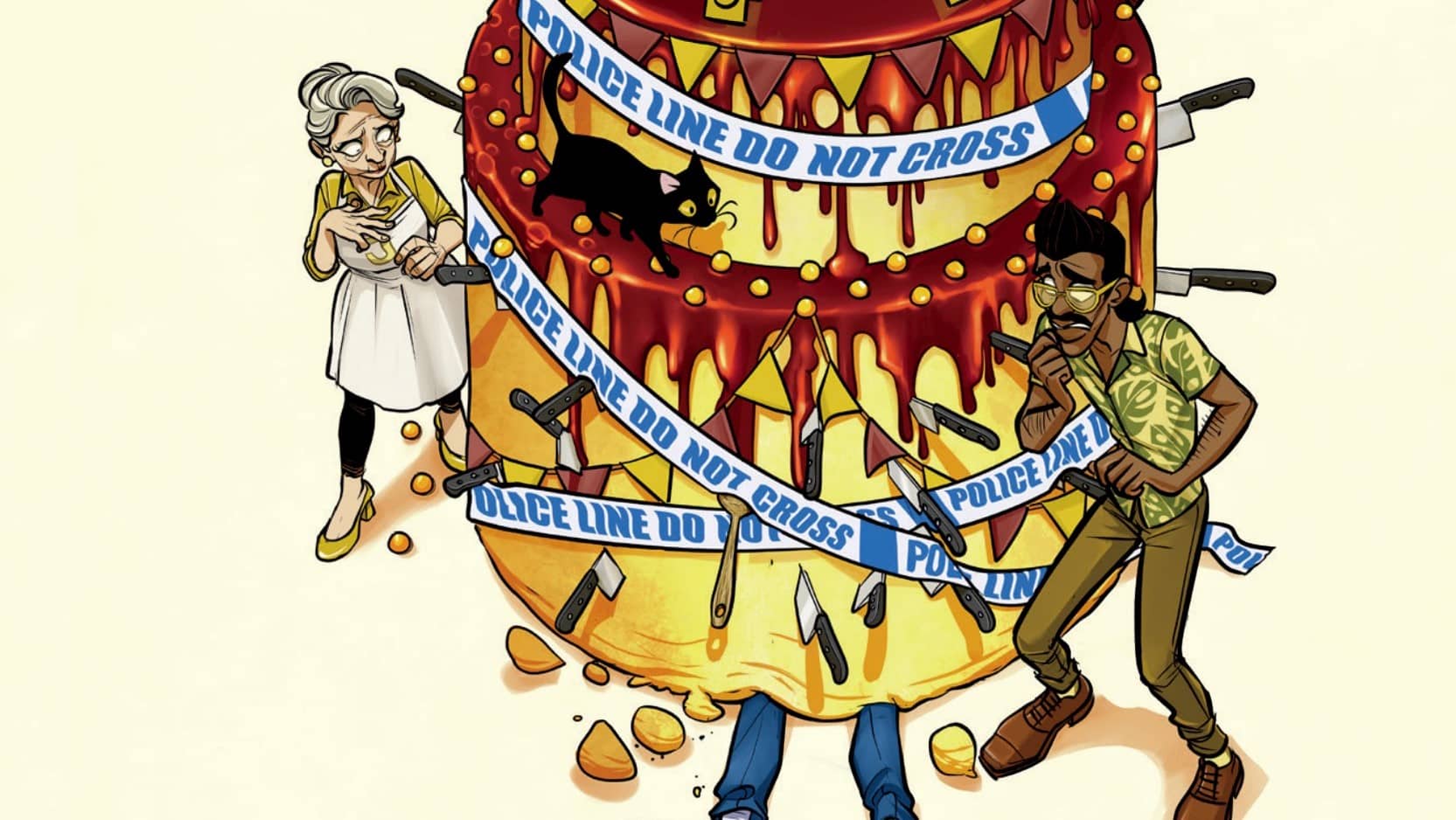Journey back in time to World War I, forward to 2024 and even farther forward to a time when Earth is just a myth in this week’s Triple Play, as Matthew Lazorwitz reviews IDW’s Locke & Key … in Pale Battalions Go … #1, Will Nevin reviews Image’s Bomb Queen: Trump Card #1 and Chris Eddleman reviews Vault’s Engineward #2.
Locke & Key … in Pale Battalions Go … #1
Writer: Joe Hill, Artist: Gabriel Rodriguez, Colorist: Jay Fotos, Letterer: Shawn Lee, Publisher: IDW

The original creative team that brought readers the fan-favorite “Locke & Key” returns this week with a three-issue miniseries, “…In Pale Battalions Go…,” a prequel to the upcoming crossover “Locke & Key/Sandman: Hell and Gone.”
Set in 1915, the series returns to the Lockes of that era, who have appeared in a pair of one-shots, and focuses on John Locke, a teenager who wants to join the Great War and use the magic keys of Keyhouse to aid against the Germans. His father, Chamberlain, will have none of this, and this first issue focuses on how far John will go to join the cause.
If you are unfamiliar with “Locke and Key,” or familiar with it only from the Netflix adaptation, this story is a solid jumping on point. You don’t need any knowledge of the previous series, set in modern times, or the previous appearances of the turn-of-the-century Lockes. Writer/co-creator Joe Hill adds a text page to set up the very general premise at the beginning, and spends time introducing young John, family patriarch Chamberlain and matriarch Fiona, and even a bit of time with John’s sister Jean. Hill, like his father, horror legend Stephen King, has a strong sense of dialogue and character, and while we don’t get a ton of time with each character, the bits we do get with all of them give the reader a good idea of who they are.
John’s use, and abuse, of the magic keys is the foundation upon which this book is built, and it’s the first time we’ve seen a character’s misuse of the keys for the right reasons as a central theme of a “Locke & Key” story. The kids of the original series didn’t always use the keys in the most selfless manner, but they rarely if ever truly abused the keys in the same way a villain would. Here, John flat out uses the mind control music box on his mother to get his way. It’s uncomfortable, it’s wrong, but he does it for what he absolutely believes is the right reason, and that leaves the reader with something to think about; there are no “villains” in this issue, even if the protagonist performs villainous acts.
Gabriel Rodriguez, artist and co-creator, is one of comics’ finest draftsmen and designers, and his work on this book is second to none. Since this is a period piece, it requires some different muscles than the modern horror of the previous series, and Rodriguez still brings his A-game. The costumes and the look of the house and environs feel like the turn of the 20th century; I don’t know how much research Rodriguez did, but it feels like quite a bit. Talking about the art on “Locke & Key” wouldn’t be complete with a nod to colorist Jay Fotos, who adds light and shade in all the right places, and with a book where shadows can take on a life of their own, having someone who can color them just right is key (pun somewhat intended).
Of course, this is a new “Locke & Key” story, so there must be at least one new key, this time the Stamp Key, which opens a mailbox with letters from fictional people. And if you look at the return addresses of the fictional people, and happen to be familiar with DC’s “The Sandman,” you’ll definitely get a feeling for how the upcoming crossover is going to happen.
As a fan who started reading the series with the first issue of the first miniseries, “Locke & Key: …In Pale Battalions Go…” is like getting a new pair of sneakers from a brand you know and love; it’s new but familiar in all the right ways. And if you’re not familiar with Keyhouse and the Locke family, this is a perfect time to get to know them before the Dreaming visits them this autumn.
Bomb Queen: Trump Card #1
Creator: Jimmie Robinson, Publisher: Image

Comixology tells me I have 118 books that are currently in progress, a stack of half-read digital flotsam. There’s the back matter I have to get to in “Billionaire Island” #4. The “Dawn of X” Vol. 1 I barely started. The re-read of the Posehn and Duggan “Deadpool” I started early in the pandemic because I wanted something nice and light and good in life. The journey into “Marvel Zombies” I stopped when the quality fell off the damn table. The Doug Moench/Kelley Jones/ears for days “Batman” I need to get back to.
Et al.
When I saw the solicitation for “Bomb Queen: Trump Card,” I was drawn to it — not because I need my political point of view validated by a comic book, but because I find almost any attempt to satirize the current president a fascinating spectacle in its own right. How do you make fun of someone with no shame? Or morals? How can you have him do in fiction anything more bizarre than he already does in fact? It’s nigh impossible, but I enjoy watching creators try and inevitably fail (like the bootlicking “Trump’s Titans” from Keenspot that attempts to both spoof and worship the president while also mocking DC’s “Metal” with a character called “The Donald Who Laughs”).
ANYWAY, I wanted to know more about “Bomb Queen” after seeing that solicit, so I looked it up, learned the series went back seven volumes to 2006 and yada yada yada, I can say that none of those seven volumes is accounted for in that list of 118 in progress books.
I consumed all of it. Every bit.
Why, I don’t know. But it was an easy, quick read…mostly. “Bomb Queen” is a spoof of ’90s/’00s “bad girl” comics, and Robinson drives home the idea that the Queen is not someone to be admired: Her city is full of rapists and racists (until she blows them all to hell), and she is willing to kill anyone to get what she wants. Or simply kill for fun. Or sexual pleasure. Or because she’s bored. The difficulty in reading those first seven volumes is the depths that Robinson digs into to get across the Queen’s depravity — it wears you down after a while.
But outside of that? “Bomb Queen” has the zaniest vibe down deep in its storytelling marrow, seven volumes of “yes and”ing as the Queen’s powers morph to beat any foe with the temerity to go against her. It’s like improv, but everyone has guns, and they’re half naked. Simply silly, wild energy that you (OK, I) couldn’t put down.
By those ludicrous benchmarks, “Trump Card” #1 is almost subdued — mostly because Robinson has to do heavy lifting to explain why the Queen is still around after blowing up half the U.S. (vol. 6) and traveling to the future (vol. 7), but the series’ trademark limitlessness is still inherent in its premise: It’s 2024, and with Donald Trump attempting to win a third term (after the repeal of the 22nd Amendment) and become a forever president, the Queen decides to run against him — with her half-brother clone as veep — to save the U.S. and the world.
All the weirdness of a soap opera plot with 10 times the nudity and a shitton more explosions, decapitations and eviscerations.
If this does not seem like it’s for you, it probably isn’t, and nothing I can say could convince you otherwise. But if you’re even an itty bitty bit curious, go back to that first volume and give it a read from the beginning. If you can make it through the heaps of ugliness Robinson shovels onto the character, you might find that you’ve discovered a new guilty pleasure.
Engineward #2
Writer: George Mann, Artist: Joe Eisma, Colorist: Michael Garland, Letterer: Hassan Otsmane-Elhaou, Publisher: Vault Comics

Vault Comics is kind of the scrappy up-and-comer in the industry, producing some of 2019’s best books, especially These Savage Shores, which was completely robbed at the Eisners. I feel no shame in saying so, frankly. That being said, a lot of their titles have been fairly small, limited runs.
However, Engineward is a 12-issue maxiseries from jump, a fact that has been hyped by the small publisher. With established novelist George Mann as the writer and Morning Glories alumnus Joe Eisma on art, the team has a clear pedigree.
Now, you may notice we at XF neglected to review issue #1, so I’m hopping in for issue #2 to rectify our error. To bring us up to date, Engineward tells the story of a somewhat post-Apocalyptic society, ruled over by the oligarchal Celestials, who each are named after the twelve Zodiac signs (who also seem to grace each cover). It seems as though the underclass at least is descended from refugees from a ruined Earth ages ago. We follow the Engineward Joss, a tinkerer of lost technology, along with the adventurer/scavenger Ichabod, through this deepening mystery.
I thought the initial issue was fine but rather light on momentum as much as it established the premise. However, this second issue was quite interesting in comparison, as the talking head the crew found last issue began to divulge some of its secrets. Mann is making the most of his promised 12 issues, as we have three established parallel narratives that will likely crash into each other at some point in this series. We have the ominous background plot of the townsfolk disappearing due to some sinister force, Joss and Ichabod finding out that a piece of terraforming technology sits somewhere in the wilderness, and the court intrigue of the ruling Celestials. The scaffolding of this story reads familiar with an Earth of the past, a corrupt water-hoarding oligarchy, the brains and the muscle. However, the worldbuilding and terminology established by Mann adds some desirable flavor. I particularly like how Joss speaks about computer engineering as if it’s magic.
Eisma brings a more cartoony element in his artwork, which makes this comic feel like a fantasy adventure rather than hard science fiction. However, this is tonally quite perfect, especially in the case of the larger-than-life Celestials. His art occasionally seems to have off-appearance faces that appear rushed, but in general I enjoy his style. He lays out an alley confrontation at the beginning with frenetic pacing, only to slow it down nicely as the issue heads into conversation mode. Eisma does craft an interesting circular layout early in the issue, but it reads counterclockwise, which made it difficult to parse.
Michael Garland’s colors are perfect. They add wonderfully to the garage sale science fiction/fantasy vibe that embodies the tone of the series. His mottled backgrounds make the entire comic look a little bit dusty, which adds to the bleak setting, even with its lighter artistic style. Garland is a real all-star of this issue.
Finally, we come to the letters, by the prolific Hassan Otsmane-Elhaou. Otsmane-Elhaou’s basic letters (for everyday use) in this issue are incredibly strong. They’re a little wavy, a little fun, which fits with the aforementioned style. That being said, there are TONS of specialized fonts and caption boxes in this issue, complete with occasional color changes. The choice of having Leo, the Celestial, speak in grand golden caption boxes is pretty cool, and the Celestials all seem to have their own unique lettering and balloon gimmicks. Luckily, we only see a few on panel at once, or it would really take over the page. It seems a bit much, though, to have seemingly random blue, green and red letters spoken by other characters throughout the issue. I found these standouts incredibly distracting, especially without consistent use. That’s to say some of them DON’T have consistent use. Our narrator boxes are a nice light blue, which do add to a consistent feel. I think you have to use these sorts of things sparingly, but that could just be personal on my part.
Engineward is getting more and more interesting by the issue, and I’m starting to really enjoy it. I think a stronger start would have been called for, but a guaranteed 12 issues is a good way to ensure I’ll stick things out. Unique and interesting speculative fiction is the bread and butter of Vault, and this book delivers in that way.

